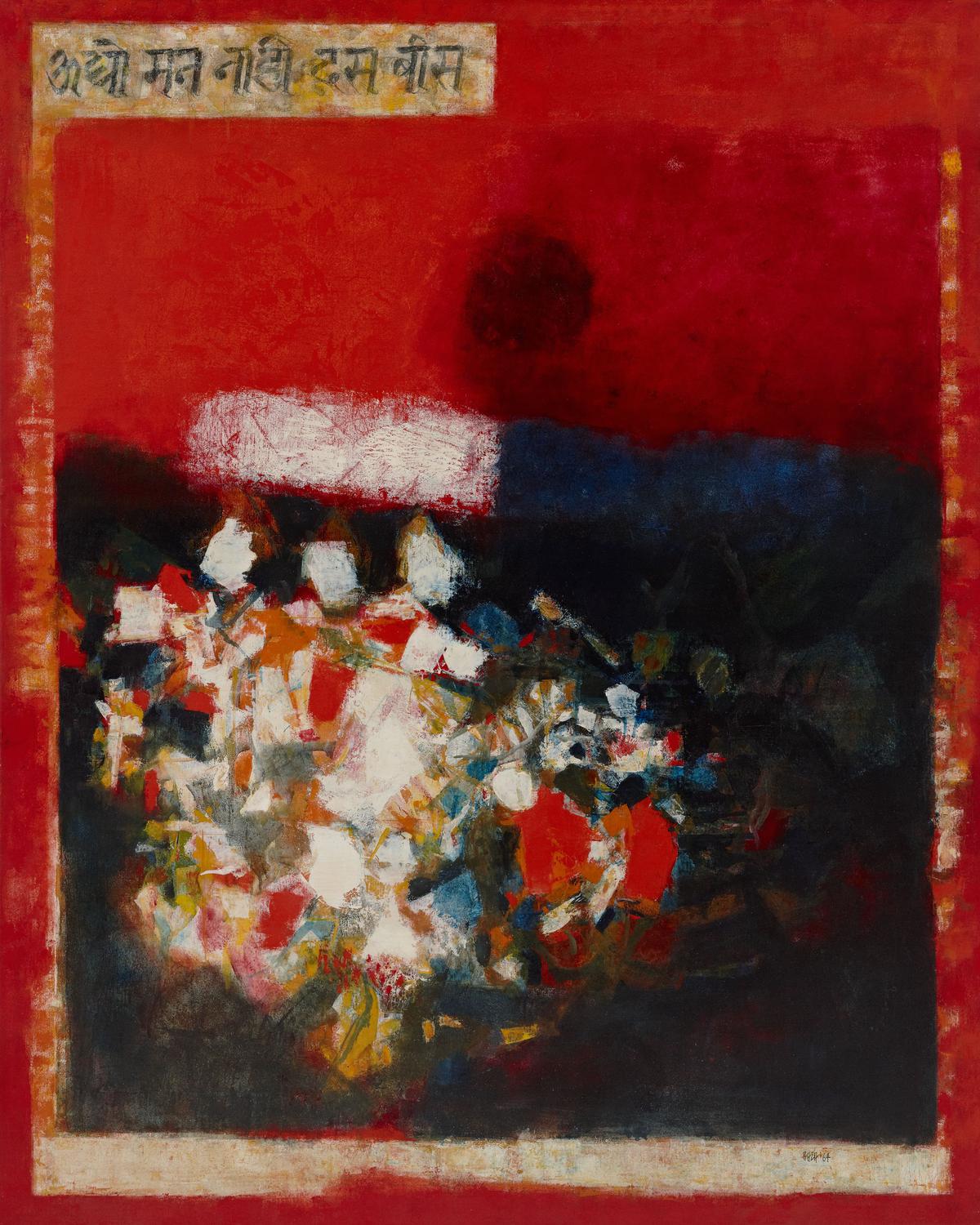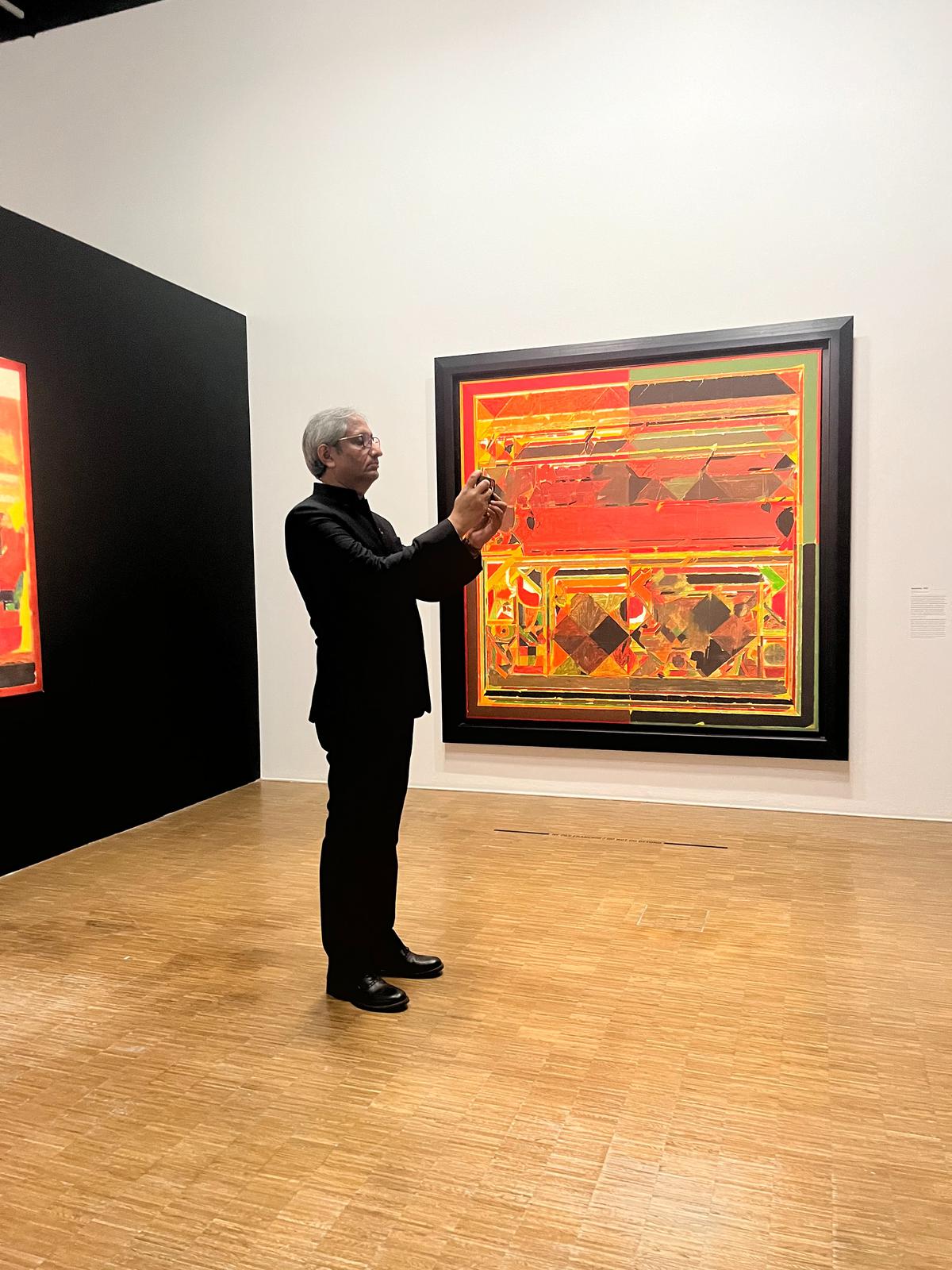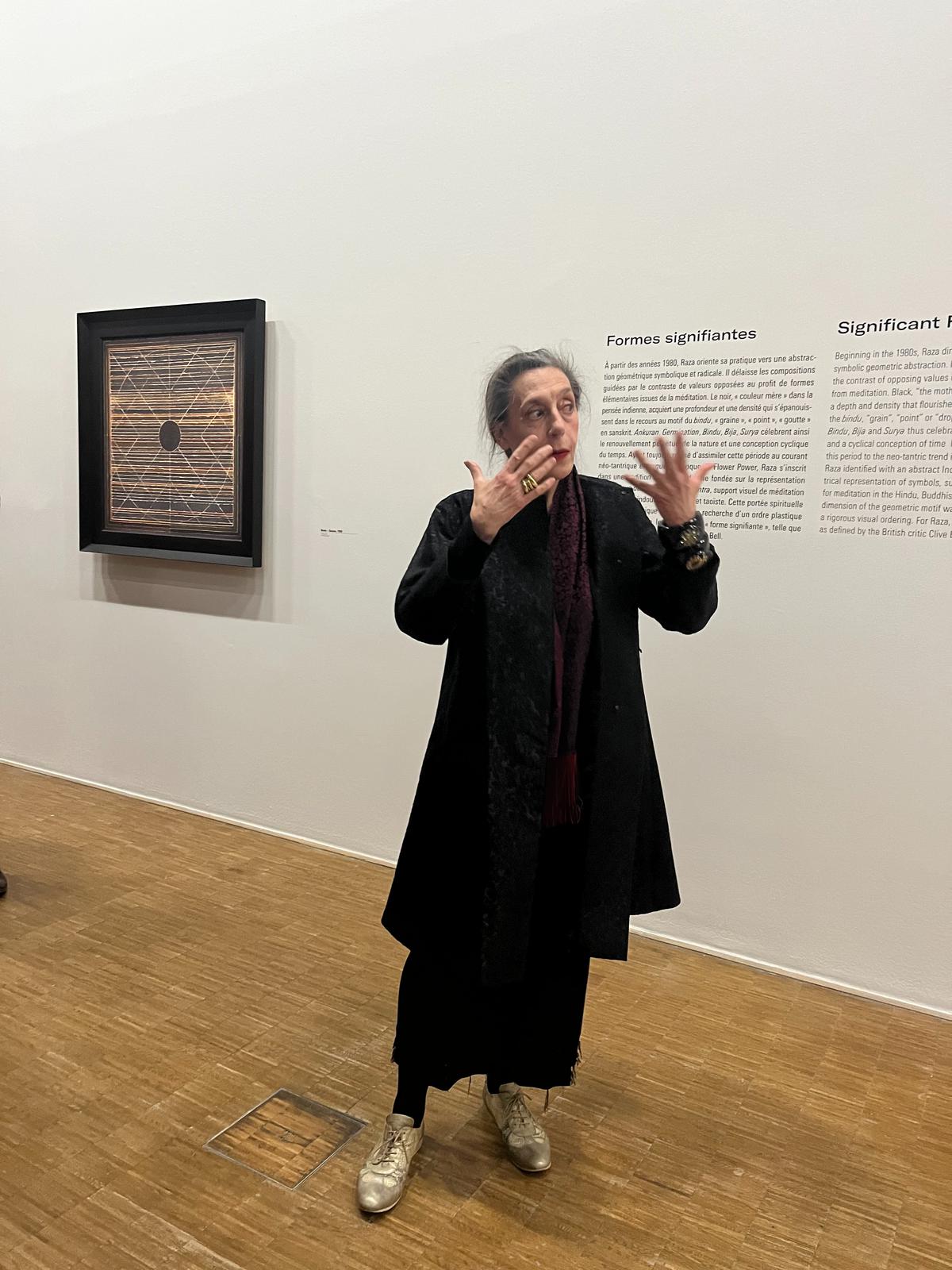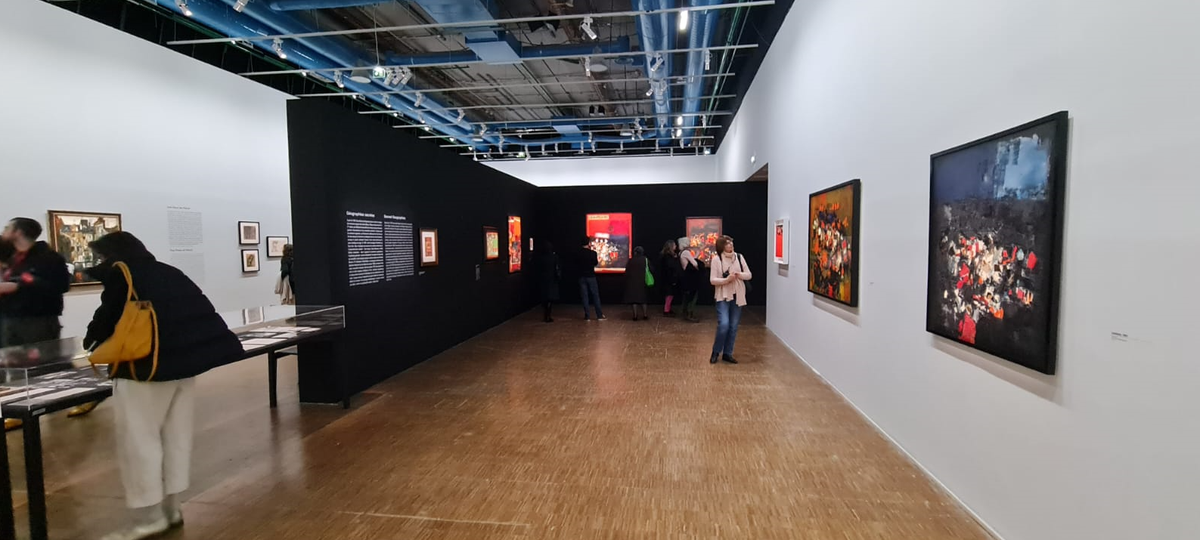Centre%20Pompidou,%20MNAM-CCI_Photo%20Bertrand%20Prévost-2023%20(2).jpg)
Entering Centre Pompidou, one of my favourite spaces in ‘gay Paris’, built by architects Renzo Piano, Gianfranco Franchini and Richard Rogers, I felt an inordinate sense of pride. I was walking with a spring in my step to view the first-ever solo exhibition of an Indian artist at this prestigious centre. I am, of course, speaking of Syed Haider Raza (1922-2016), the celebrated Indian artist who was as much a force to reckon with in India as he was in France, a country with which he had a long and memorable association, having lived and worked there from 1950 to 2011.
ALSO READ ‘Raza was secular, with a global outlook’
Having said that, I am not very fond of comparisons. So, when my friend and English architect, Peter Camp, who was accompanying me, referred to Raza’s paintings as being reminiscent of the work done by Latvian-American abstract artist Mark Rothko, I was appalled. Personally, I have always loved how Rothko used colour to create his sweeping fields of abstract paintings, but to my mind, Raza goes much deeper than merely playing with form and application of colour. He was a sensational colourist, a master of light. His canvases illuminate with an unmatchable radiance. It was not a surprise, therefore, to find that hundreds of people had thronged the opening reception on Valentine’s Day. Four days after the opening, there were no less than 1,000 visitors.

Raza’s oil painting ‘Ondhu, Heart Is Not Ten or Twenty’, 1964.
| Photo Credit:
Walter Silver/ Peabody Essex Museum, Massachusetts
Free-flowing ideas
It was an eye-opener to realise how many people Raza personally knew or had touched through his work. The exhibition was specially designed keeping the free-flowing ideas and concepts, which were very much part of Raza’s artistic oeuvre. There were early works on paper that Raza had created at the Sir J.J. School of Art, there were the archives in elegant vitrines and a large number of canvases showing his entire work.
Raza was born in Babariya in Mandla district of Madhya Pradesh, and after a stint at the Sir J.J. College of Arts in Mumbai, he went to Paris on a French government scholarship to study at the prestigious Ecole des Beaux-Arts in Paris. In France, he had for company Akbar Padamsee and Ram Kumar, who would later come to be counted as significant names in Indian contemporary art. Raza made his home in Paris and married a fellow French artist, Janine Mongillat in 1959. When Janine passed away from cancer, he returned to India permanently in 2010 and continued to live and paint in Delhi till his death in 2016. He was buried according to his wishes beside his father at the place of his birth in Mandla.

Magsaysay awardee and journalist Ravish Kumar takes in the Raza paintings on display at Centre Pompidou.
| Photo Credit:
Alka Pande
Despite his fondness for art and artists of other countries, Raza was a man who also loved his country deeply. He, time and again, dipped into the classical traditions of Indian art, be it Chola bronzes, miniature paintings, or the iconic bindu, which became a recurring leitmotif in his work.
‘Bindu was the moment’
So much can be said about his life and art, and some of the most evocative conversations happened at Centre Pompidou. The two curators, Catherine David and Diane Tourbet, have taken nearly seven years to put the exhibition together. Tourbet says, “For Raza, the bindu was the moment, the clé de voûte, or the fulcrum, on which his paintings rest and that is why we have ended the exhibition with the bindu series.”
Raza’s long-term friend and secretary of the Raza Foundation, Ashok Vajpeyi, eloquently shared a number of anecdotes bringing alive the artist’s unrivalled spirit of creativity and affability. Vajpeyi spoke about Raza’s admiration for the Austrian poet Rainer Maria Rilke. One story goes such: before Raza started a painting, he would fold his hands in prayer in front of the canvas and mumble something. “When I asked him what he was chanting, he said it was Rilke’s poem; to listen to that inner voice of silence.”

Catherine David, the co-curator of the Raza exhibition.
| Photo Credit:
Alka Pande
I also caught up with Paris-based Indian artist Sujata Bajaj, one of Raza’s close associates. Once we got over the initial thrill of finding that we were both wearing scarves designed with a Raza print, mine gifted to me by the man himself, we went on a trip down memory lane. Bajaj told me she had known the artist closely from 1988 to 2008. “When I came to Paris in 1988, he befriended me, and I began to call him my guardian angel. Ten years down the line, Raza would call me his guardian angel.”
There were many shared moments of nostalgia and affection for everyone who had gathered at the Centre Pompidou, whether it was his avid collectors such as Kiran Nadar, Swati Piramal, Ashvin Rajagopalan or gallerists such as Reena Lath, Payal Kapoor and Ranjana Steinruecke. Emmanuel Lenain, the French ambassador to India had made it a point to be present at the Paris opening and he too spoke about the strong Indo-French connections through the soft power of text and image.

A view of the gallery.
| Photo Credit:
Ashvin Rajagopalan
A series of events was organised in the opening days of the exhibition. I was particularly fascinated by the way Ashvin Rajagopalan deconstructed the Raza repertoire, using newspaper articles, calendars and letters. His artistic journey was also discussed through various lenses of writers, curators and art historians such as Homi Bhabha, Deepak Ananth, Laetitia Zecchini, Atul Dodiya, Rahaab Allana, Roobina Karode, each of them presenting their singular interpretation. Bhabha spoke about a double elevation in Raza’s work: elevation from India and elevation from France.
A busy centenary
The Raza Foundation has had an extremely busy 2022 celebrating Raza’s 100 years. The Kiran Nadar Museum of Art organised a fabulous exhibition at the Bikaner house in September 2022. In June 2022, the Jehangir Nicholson Art Foundation organised a beautiful exhibition ‘Zamin’ in Mumbai.
The foundation is now planning two more exhibitions at the end of March 2023, in Dubai and in New York. A certain disappointment is obvious for all the admirers of Raza and the Indian art fraternity. “Neither the National Gallery of Modern Art nor the Lalit Kala Academy or even Bhopal Bhawani, which has the largest public collection of Raza’s work, has done anything to mark his centenary celebrations,” laments Vajpeyi.
While the 91 artworks and 83 documents of Raza that are showcased at the Paris retrospective are truly special, I wish more works from the 90s and the turn of the millennium could have been included. The time when he had found his voice, his love for his homeland, and mastery over the language of art.
The exhibition is on till May 15, 2023.
The writer is an author, art historian and curator.
Stay connected with us on social media platform for instant update click here to join our Twitter, & Facebook
We are now on Telegram. Click here to join our channel (@TechiUpdate) and stay updated with the latest Technology headlines.
For all the latest Entertainment News Click Here
For the latest news and updates, follow us on Google News.
